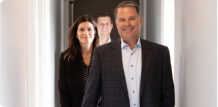Dissatisfied with progress on the jobs front, the Fed went “all in” yesterday in its much anticipated, most recent policy announcement. Unlike QE1, QE2 and Operation Twist, the latest addition to the monetary smorgasbord is open-ended, meaning that it has no pre-established termination date. (View a printable version of this Economic Update: All In).
Policy, we have been told, will remain stimulative for as long as it takes to see a “substantial” improvement in employment. Rather than keeping rates low well into 2014, it could now be well into 2015 before they tick back up, which in a world dominated by quick trigger hedge funds, represents an investing eternity.
While we can debate the wisdom of continued, aggressive Fed policy moves, we should be careful to understand that the go forward decision has already been made. That is our reality and historically speaking, it doesn't pay to “fight the fed.” The market’s long term journey is paved in days, months and years, and not all of them will be to our liking.
So where do we go from here? Those of you in the Broadleaf Growth Equity portfolio have seen several changes in the past week or two which offer hints as to where we see incremental value accruing within the economy. In general, however, the policy move should be supportive of many asset classes, particularly stocks and, perhaps to a lesser extent, commodities. On the latter front, I only say to a lesser extent, because China and Europe are in economically weaker states than they were during QE1, suggesting that they won’t be the sources of competing natural demand for commodities that they were two years ago.
A positive element of the Fed announcement may be its open-ended nature. By not specifying a completion date, we may finally be able to avoid the risk on, risk off tendencies that the markets have experienced over the last three years, where risk off attitudes have quickly emerged precisely as each Fed stimulus program was coming to an end. Rather than craving the next hit, we will now know that it is already there. While I’d prefer learning to ride without training wheels, we’ve got them for the foreseeable future.
One of the reasons President Clinton’s speech at the DNC resonated with many Americans is that he voiced something we know to be true, even if unpopular. Economic healing just takes time, especially when the damage has been so severe. Interest rates have been low and falling for several years now. While we have made some progress on the jobs front, neither the downturn nor the recovery has been textbook.
A year ago, the Fed directly targeted the housing industry as a key missing variable in the economic recovery, issuing a white paper discussing the important trickle down effects of the industry in wealth creation. Operation Twist was created to coax long term mortgage rates even lower, and now, a year later, the housing industry finally appears to be on the mend. Permits, starts, inventories and new home pricing are all at the best levels they've seen since the bubble first popped years ago.
Private equity funds have been eager buyers of entire neighborhoods of home foreclosures from banks, properties which they are hoping to rent for 8-10% yields on their money and maybe even resell once the pricing environment improves. Faced with an unattractive bond market, these funds are taking the bull by the horns and creating better income streams elsewhere. Private enterprise, not the government, is finally getting in the game, but as with many things in this recovery, it has simply taken some time. While not the perfect end-buyer’s market for homes, it represents an important step towards healing in the industry.
As one of the most cyclical industries in the economy, higher housing demand has outsized effects on job creation, which is why the Fed targeted it so precisely last year. As housing prices firm and eventually improve, consumers feel wealthier as the key asset on their balance sheet increases in value and, as recent history would have it, may no longer be underwater. Low interest rates have helped, but I suspect that time has helped the most.
The Fiscal Cliff is just on the horizon and an important election is looming. Things aren’t ideal, but they are improving, and I suspect will continue to do so regardless of which party is in power this January. There are no easy roads, only long ones, but the Fed’s decision to support the economic recovery at all costs is nevertheless bullish.
Ignore it at your own peril.
Kindest Regards, Doug MacKay, CEO & CIO Bill Hoover, President


